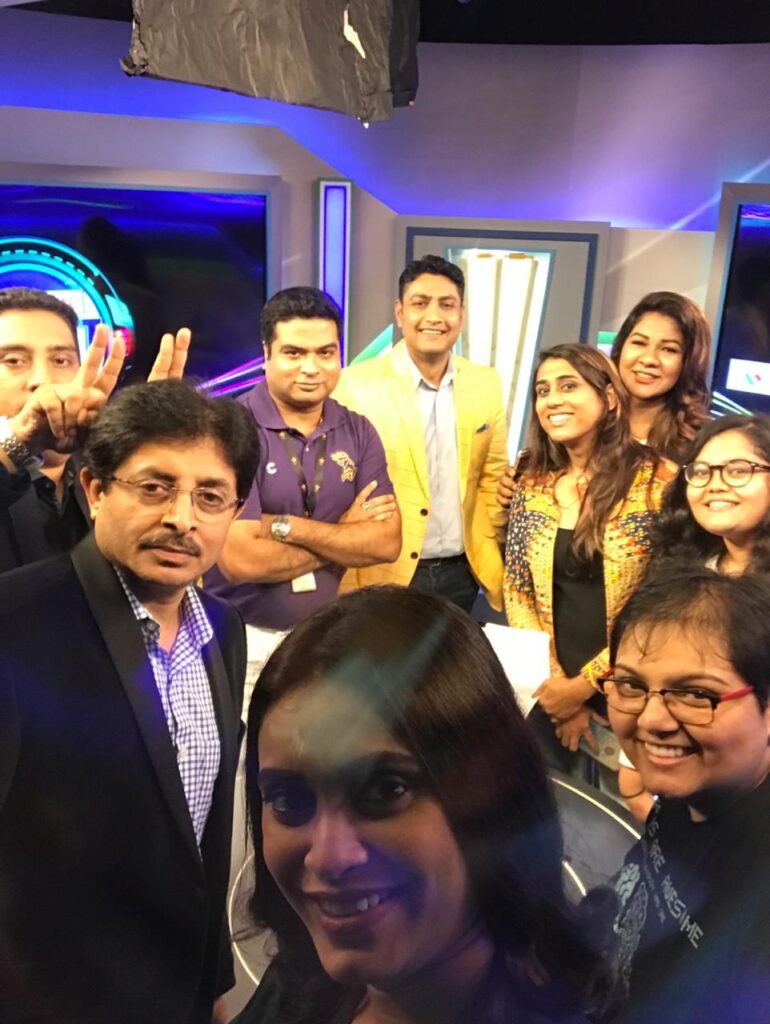
There are few things in sport that compare to the energy of the Indian Premier League. And fewer still match the thrill of producing it live.
As a producer, who has worked across both live broadcasts and non-live IPL content, I can tell you — the high of live television is unmatched. The countdown to the toss, the roar of the crowd through the comms, the anchor in your ear, the camera switching on cue — every moment is edge-of-your-seat theatre. It’s thrilling, terrifying, and addictively beautiful. Your heart races as you time transition between packages and promos, hoping the replays match the anchor’s words. You’re not just producing content — you’re choreographing a live symphony, where the smallest delay feels like a missed beat.
But the real magic is that, even in the chaos, you’re thinking five steps ahead.
The Calm After the Storm: Producing Non-Live
In contrast, the world of non-live shows is quieter — not slower, but deeper. There’s a stillness that allows you to immerse yourself in a different kind of storytelling. You’re not just covering the moment, you’re constructing one.
Player interviews, for instance, demand empathy. Post-producing them is less about cricketing insights and more about capturing the person behind the athlete. It becomes a collaborative effort between the producer and editor — stitching together raw emotion, subtle silences, and those rare, vulnerable moments where the player lets their guard down. You’re no longer just creating content — you’re preserving honesty. And that takes trust, timing, and tact.
The IPL Opener: The Producer’s Battle Cry
If I had to choose my favourite part, it’s writing and ideating the IPL openers — the montage videos that set the tone, build the hype, and emotionally transport viewers into the drama of the day’s clash. There’s something primal about building a story that needs to say it all in 60 seconds. You sit with the content head for hours, pacing around rooms, editing scripts line by line, chasing the perfect sentence that’ll make a viewer sit up. “One team’s redemption. The other’s reckoning.” Every word has to land. Every beat has to hit.
And in today’s world, it doesn’t end there.
The Digital Battlefield: Hunting for the Right Frame
A surprising amount of time now goes into scrolling — through Instagram profiles, Twitter feeds, post-match galleries — all to find that one photo where a player’s emotion matches the tone of your show. Content has become visual-first, and the producer’s job is now part editor, part curator, part psychologist. You’re not just thinking of the show’s flow — you’re thinking of thumbnails, hooks, viral angles.
The Thankless Truth: The Invisible Umpire of Production
We’re often asked — “What do you really do?”
You’re not the anchor. You’re not the editor. You’re not even the face on-screen. Are you just a go-between?
The answer is: you’re the umpire of this match. If everything goes right, no one notices you. But if anything goes wrong — bad footage, sloppy script, off-key tone — the producer is the first to be pulled up.
It’s a thankless job, but a powerful one. You enable content to breathe. You help the editor refine that final one minute that makes a viewer go “Wow.” You guide the anchor through tone and context. You clean up chaos when there’s a glut of information. You make sure every sport gets its place, not just cricket. And you’re the final hurdle — the last check — before a show hits the world.
We don’t always get it right. But we do always care. And that’s why we matter.
Because in this noisy world of sports content, we are the thin line between clutter and clarity. Between just another segment and something unforgettable.
Producers are not the stars of the show.
We make the show. And there’s no bigger rush.
The Digital Revolution: How IPL Franchises Are Redefining Fan Engagement





